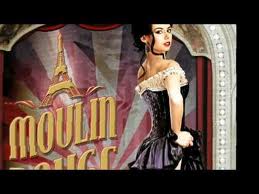Moulin Rouge: A Ballet To Forget
Posted by Deirdre | Filed under Blog
It’s been a long time since I felt bored at the ballet. But not even half way through the Royal Winnipeg Ballet’s homegrown production of Moulin Rouge, I was so adrift on a sea of ennui, I started looking at the other audience members sitting around me to better pass the time.
They were a lot more interesting than the characters ripping through the stale baguette of a 19th century Paris-inspired ballet by RWB choreographer Jorden Morris on the stage of Toronto’s Sony Centre for the Performing Arts.
The RWB, at 74 the country’s oldest classical dance company, used to be cause for celebration whenever it came to town. It was why the seats were filled with such esteemed Canadian ballet alumni as Nadia Potts, Vanessa Harwood, Mary Jago, Timothy Spain, Svea Eklof, Patti Caplette, to name some of the notables surrounding me now.
When directed by the legendary Arnold Spohr, who died almost four years ago, in May 2010, the RWB was the ballet company everyone who cared about ballet in Canada went to see whenever it made a rare visit to Toronto. Tonight was no different.
The RWB was the only company which kept its rival, the National Ballet of Canada, on its toes. That rivalry was captured by each company’s leading ballerinas. The National Ballet had Karen Kain, the dark-haired technical dynamo. But the RWB had Evelyn Hart, a poetic dancer, pale and gossamer light, who became known world-wide as one of the great Giselles when she commanded the stage more than a decade ago.
Now retired from performing, and having abandoned Winnipeg for Toronto where these days she ekes a living as a ballet coach, Hart was one of the faces I fixated on while wilting in my seat. She sat slightly behind me, to my right, sporting a new platinum do which made her look like a million. But she wasn’t smiling.
Rigid in her chair, Hart had a look of concern frozen on her small, pale visage. Next to her, Rex Harrington, the former National Ballet principal dancer and Hart’s frequent on-stage partner, hid his in his hands. During intermission, I was behind him as he trudged up the aisle, griping aloud. “I’ll never get these two hours back,” he said.
I shared the sentiment.
The new-look RWB, under the direction of former dancer André Lewis, was a major let-down.
The company’s dancers were competent. Vanessa Lawson and Gael Lambiotte looked highly committed to their roles as boho lovers who had to contend with pimps, prostitutes and other members of the demimonde before their love affair could soar high above the Paris rooftops.
It was the choreography that was flat. The steps and movement patterns were so rudimentary as to seem lifted unedited from daily ballet class with little concern for innovation. Demi-plié, echappé, en pointe à la seconde, plié. If I saw this variation once, I saw it a hundred times.
My eyes starting to glaze over, I started to see the dancers as all weak and wobbly, as if I, not the male lead on stage, was the one drunk on absinthe.
But they weren’t. I was feeling punch drunk.
As a whole, the company is solid and well trained. Lawson, in particular, has a ferocious technique. Lambiotte is as handsome as he is elegant, a dancer you’d like to see again, in another piece, where he really could show what he’s made of.
Pity, then, to hobble their talents with pedestrian choreography as this. Moulin Rouge certainly didn’t show off their collective talent to advantage.
Morris, the ballet’s creator, came off as laughably unimaginative. His best bits appeared lifted from other ballets. The bridge scene pas de deux in act one was oddly reminiscent of the balcony scene from Romeo and Juliet. The death scene looked like the end of the first act of Giselle. The high-stepping café scene owed a debt to The Merry Widow.
If Morris was desperate for ideas, then why didn’t he look to Leonid Massine’s 1941 ballet, Gaîté Parisienne, or Sir Kenneth MacMillan’s 1974 ballet, Manon, other Paris-inspired works which really do capture your imagination.
Morris’s ballet doesn’t, weighed down as it is with clichés.
The characters could more accurately be called caricatures, as we’ve seen them all before: the starving Paris artist; the whore with a heart of gold; the street painter with his easel in Montmartre; giggling coquettes in frilly French underwear; mustachioed waiters on the make.
These portraits are so uni-dimensional, it’s no wonder the ballet feels shallow. There’s no emotional depth, nothing n audience member can cling to in the dark by way of empathy. There’s no joy, either.
Making matters worse was the canned can-can music, a veritable pastiche of Paris muzak through the ages. It’s the kind of weary sound-score you’d expect from a third-rate bus tour of the City of Light: a little Strauss and Offenbach here, a little Debussy and Piazzola there, all of it annoyingly familiar.
Somewhere in the middle, I swear, was the children’s ditty, I’m a Little Tea Pot (Short and Stout).
I would have laughed, but honestly it wasn’t worth the effort.
To pass even more time, I started counting the rotations made by the windmill set on stage, a replica of the real Moulin Rouge in Paris. I wondered if the ballet would end up scaring off people from wanting to experience the real thing. Morris took an idea of Paris and made it insipid.
As the French have been known to say, off with his head.

